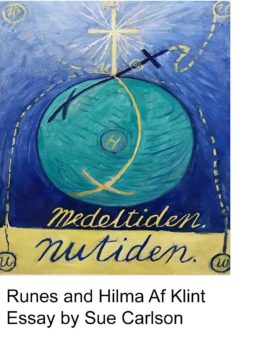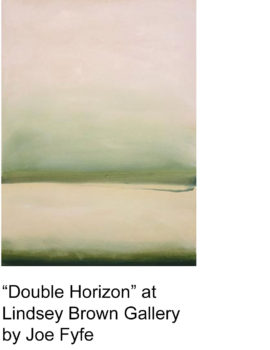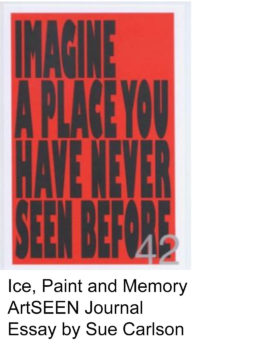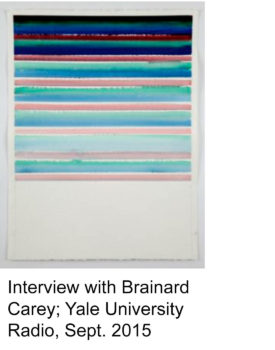In Sue Carlson’s “Double Horizon” series of paintings the earth’s edge seems to ascend, flickering upwards like God’s TV screen. We simultaneously behold the present moment, watch it click into the past and glimpse coming days. These elegant oil-on-canvas abstractions utilize a cinematic tool, montage, within filmy landscape space. Layering sensuously applied liquid paint, Carlson creates the illusion of ungraspable distance: soaked in, washing up, like the advance lines of the sea hitting the shore. The interior horizontals, painted edge to edge, seem to depict an infinite breadth of air and land. The vertical format might embody the figure—an invisible companion, a secret sharer with the viewer, like the pairs of Romantic wanderers we find so often gazing out over the sublime distances in paintings by Caspar David Friedrich and Johan Christian Dahl. Schubert also seems present here: the artist is an accomplished pianist as well as a painter, which may account for the work’s gentle metronomic pulse.
Carlson’s use of longish rectangles truncates any peripheral scanning in order to reiterate, optically, the work’s elemental nature. This economic cropping is a further distillation of the work’s talismanic power, wherein lies Carlson’s theme of healing. She incorporates the ancient remedial arts of the Anishnabe religion, practiced by many Native American tribes, which also informs the paintings’ symbolic color, derived from the color of landscape: blue means Great Spirit, red is earth, passion, and family. White, to the Anishnabe, is the lesson learned, the state of illumination. Carlson’s particular white—a milky white, like a watchful sky—is not a ground, but an accompanist among the other colors: a strong player in every painting. (The canvas pokes through the paint in places and is sized with a clear medium, rather than the standard white gesso.) Black is fear at the beginning, transcendence at the end, like the I Ching’s admonition, “Perseverance furthers”. Carlson’s task has been to construct a trinity made up of the reparative, the sensual and the divine. Each of these paintings can be seen as a station on the way or as an embodiment of her great quest.
—Joe Fyfe 2002



